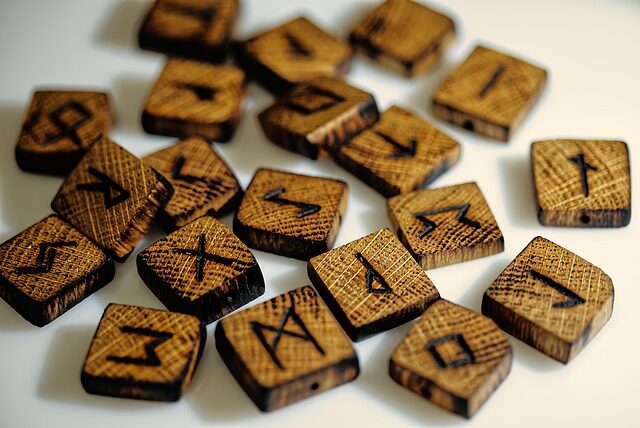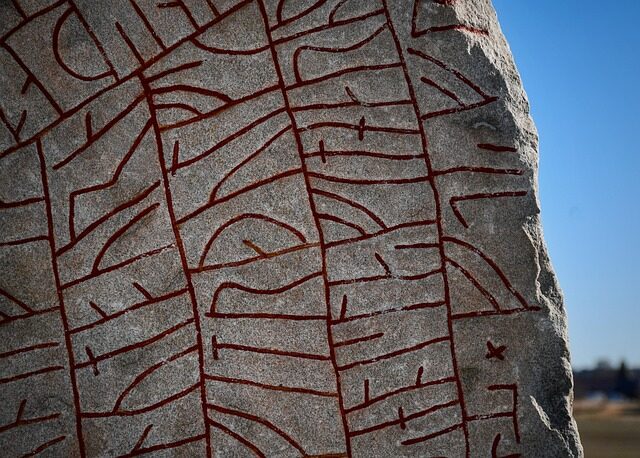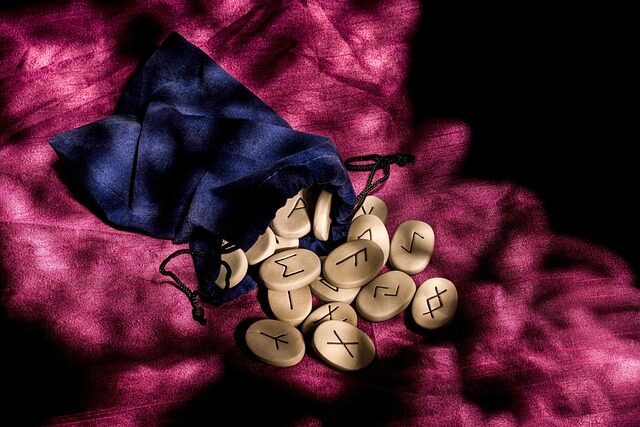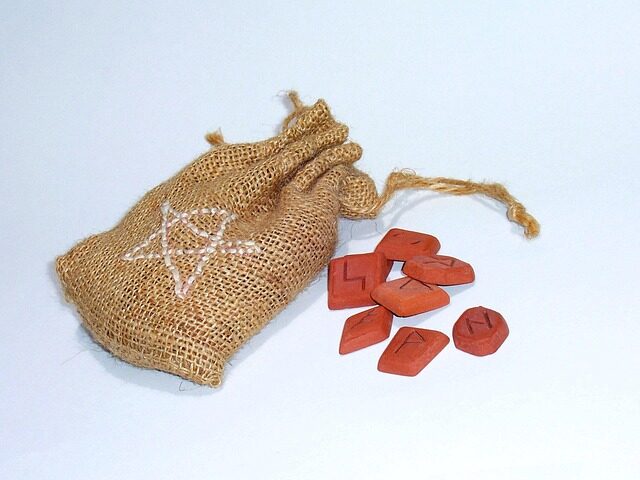The Runic Alphabet History
The runic alphabet is a fascinating script that has captivated historians and linguists for centuries. Its mysterious symbols, etched on stones, weapons, and artifacts, offer a glimpse into the lives and beliefs of ancient Germanic peoples. As an enduring legacy of the Viking Age, runes are more than mere letters; they are a bridge to the past, connecting us to a time of myths, legends, and the daily struggles of early medieval societies.
How did the runic alphabet originate?
The origins of the runic alphabet are shrouded in mystery, but it is widely believed that it developed in Scandinavia around the birth of Christ. It’s thought to have been derived from existing alphabets, such as the Latin or Greek scripts, and adapted to suit the language and needs of Germanic tribes.
Inscriptions suggest that the earliest runes were used for both practical and mystical purposes. The characters were designed to be carved easily into wood, metal, or stone, making them highly versatile and suited to the technology of the time.
As a phonetic script, each rune represented a sound, allowing for the recording of Germanic languages before the adoption of the Latin alphabet. This early writing system not only served as a tool for communication but also held significant cultural and religious importance.
What are the main types of runic alphabets?
Over time, the runic alphabet underwent several transformations, leading to the creation of different runic systems. The Elder Futhark, consisting of 24 characters, is the oldest form and was used throughout much of Europe.
During the Viking Age, a simplified version called the Younger Futhark, with only 16 runes, emerged in Scandinavia to reflect changes in the spoken language. In Anglo-Saxon regions, a variant known as the Anglo-Saxon Futhorc came into use, expanding the alphabet to include more sounds specific to English.

Each of these runic systems was adapted for the languages they represented, showing the flexibility and evolution of the script over time. Despite their differences, all shared a common purpose: to record and preserve the spoken word.
How were runes used by the Vikings?
The Vikings are perhaps the most iconic users of the runic script. They employed runes for a variety of purposes, from mundane to magical. Carvings were found on gravestones, weapons, and even jewelry, serving as memorials, declarations of ownership, or invocations of protection and power.
In Viking society, runes were not just letters but symbols imbued with significance and potential. They were believed to have inherent magical properties and were often used in rituals and charms. This mystical aspect of runes only added to their allure and the mysteries surrounding their use.
Runes also played a role in everyday life, marking territory, commemorating events, and even serving as a rudimentary form of identification. The Vikings’ widespread use of runes is a testament to the script’s importance in their culture.
What is the significance of the Futhark?
The term Futhark is derived from the first six letters of the runic alphabet: F, U, Þ, A, R, and K. It is significant not only as a name but also as a representation of the runic system as a whole.

The Elder Futhark, with its 24 characters, paints a picture of a society in transition, capturing the linguistic and cultural shifts of the time. As the precursor to the Younger Futhark and the Anglo-Saxon Futhorc, the significance of the Futhark lies in its foundational role in the history of written language in Northern Europe.
The Futhark was more than a simple alphabet; it was a tool for memorializing the dead, invoking the divine, and asserting one’s place in the world, serving as a powerful symbol of identity and belief.
How did the runic alphabet evolve over time?
The evolution of the runic alphabet is a story of adaptation and survival. As Germanic languages changed, so too did the runes, becoming more specialized and regional in form. The transition from the Elder to the Younger Futhark is particularly telling, reflecting the linguistic shifts as Old Norse became more prevalent.
With the spread of Christianity, the Latin alphabet began to supplant runes, leading to a gradual decline in their use. However, in certain areas, like Iceland and remote parts of Scandinavia, runes were used well into the Middle Ages, demonstrating their enduring appeal and utility.
The eventual standardization of language and script did not mark the end of the runic alphabet; rather, it transitioned into an object of scholarly interest and national heritage, kept alive through study and preservation.

Which inscriptions are the earliest known?
Some of the earliest known runic inscriptions date back to around AD 150, offering a tantalizing glimpse into the world of the early Germanic peoples. These inscriptions, often brief and cryptic, are found on artifacts like jewelry, weapons, and runestones.
The discovery of these ancient texts has provided invaluable insights into the languages, cultures, and beliefs of the time. They serve as the earliest physical evidence of the runic script in use and are key to understanding the development of writing in Northern Europe.
The exact meanings of many of these inscriptions remain a mystery, but their very existence is a testament to the deep historical roots of the runic alphabet.
What role did runes play in Norse mythology?
In Norse mythology, runes were more than a mere writing system; they were divine symbols with profound spiritual significance. According to legend, the god Odin hung himself from the World Tree, Yggdrasil, and sacrificed himself to gain the knowledge of runes.
This mythological connection underlines the sacred nature of runes in Norse culture. They were not simply tools for communication but held mystical power, believed to be capable of altering fate and invoking the gods.

Runes appear throughout Norse literature and lore, underscoring their significance in the worldview of the Vikings and their descendants. As both practical and divine symbols, runes were integral to the fabric of Norse society, embodying the intertwining of the mundane and the magical.
For those interested in delving deeper into the mysteries of the runic alphabet, the following video offers a visual exploration of its history and significance:
In summary, the history of the runic alphabet is a rich tapestry of language, culture, and belief, intertwined with the very essence of ancient and medieval Germanic life. Its characters have endured through the ages, not just as a form of writing but as powerful symbols of identity and magic, evoking the spirit of a bygone era and capturing the imagination of those who seek to understand the past.

